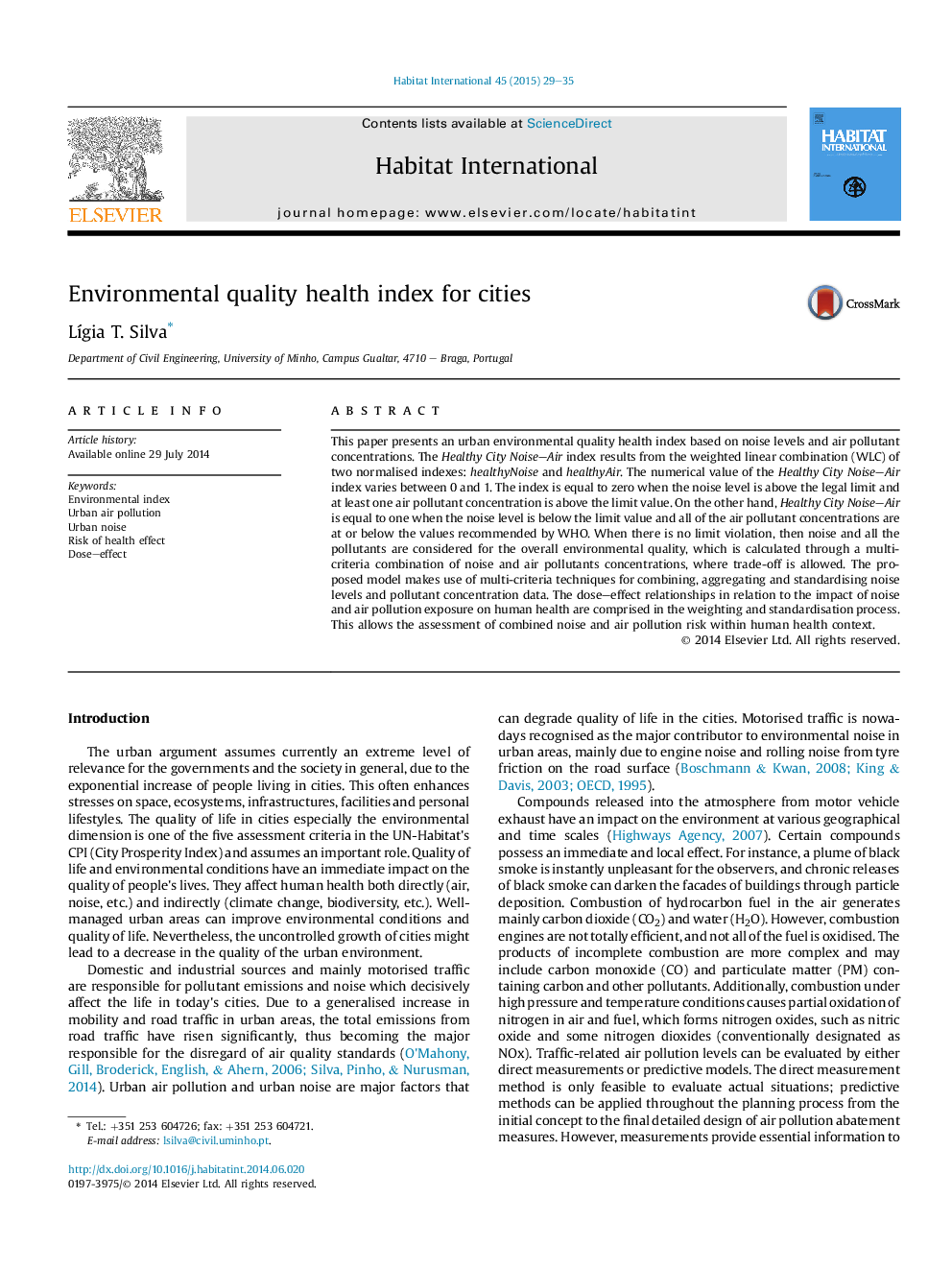| Article ID | Journal | Published Year | Pages | File Type |
|---|---|---|---|---|
| 1048032 | Habitat International | 2015 | 7 Pages |
•An urban environmental quality health index is developed – Healthy City Noise–Air.•The combination of noise levels and air pollutant concentrations is proposed.•The dose–effect relationships of noise and air pollution are used.•Assessment of combined noise and air pollution risk within a human health context.
This paper presents an urban environmental quality health index based on noise levels and air pollutant concentrations. The Healthy City Noise–Air index results from the weighted linear combination (WLC) of two normalised indexes: healthyNoise and healthyAir. The numerical value of the Healthy City Noise–Air index varies between 0 and 1. The index is equal to zero when the noise level is above the legal limit and at least one air pollutant concentration is above the limit value. On the other hand, Healthy City Noise–Air is equal to one when the noise level is below the limit value and all of the air pollutant concentrations are at or below the values recommended by WHO. When there is no limit violation, then noise and all the pollutants are considered for the overall environmental quality, which is calculated through a multi-criteria combination of noise and air pollutants concentrations, where trade-off is allowed. The proposed model makes use of multi-criteria techniques for combining, aggregating and standardising noise levels and pollutant concentration data. The dose–effect relationships in relation to the impact of noise and air pollution exposure on human health are comprised in the weighting and standardisation process. This allows the assessment of combined noise and air pollution risk within human health context.
